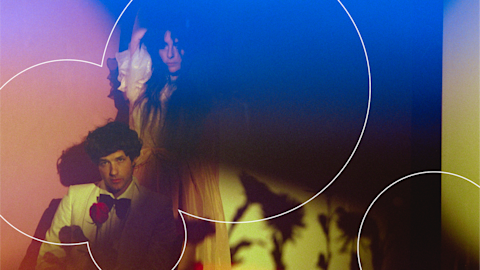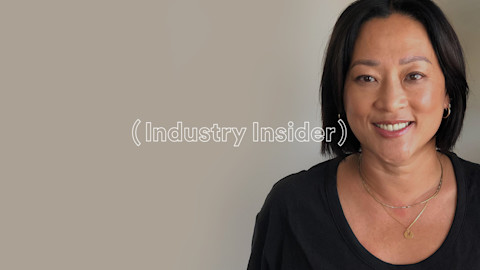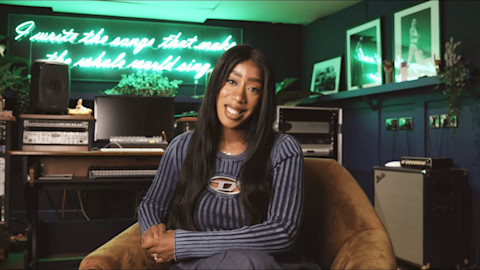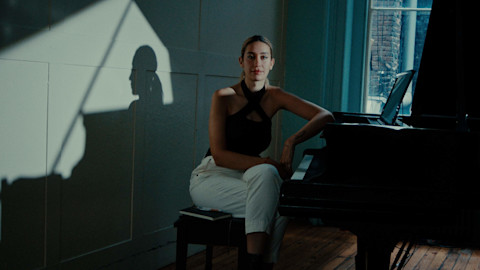Since forming in 1998, Sunn O))) have been widely recognized as one of the most vital forces in experimental metal. They rattled speakers across the world with their third album, 2003’s breakthrough White1, and have since released a number of seminal drone records, like 2009’s Monoliths & Dimensions and this year’s Life Metal, which was recorded and mixed by audio engineer Steve Albini, famous for his work with Nirvana and the Pixies, among others. Sunn O)))—consisting of founding members Greg Anderson and Stephen O’Malley as well as frequent collaborator Tos Nieuwenhuizen—are equally renowned for their deafening live performances, where they assault concertgoers with tidal waves of vibration and thick clouds of fog in venues ranging from churches to caves.
We talked to Anderson and O’Malley about what “life metal” means, why they play so loud, and why they wear robes to conceal their identities on stage.
Spotify for Artists: Your live shows are known for their overwhelming volume. What kind of experience do you want audience members to have?
Stephen O’Malley: That’s one of the strengths of Sunn O)))’s concept—that the experience of being inside the sound is something unique for a lot of people, including the people performing the music. The people in the audience and the people on the stage are both experiencing that kind of phenomenon aspect of music together. We’re all in it together when there’s that much energy, acoustic energy, sound energy happening in a space. And that’s something we’ve developed and refined over time. There’s still refinement to be had, in my opinion, to get where its potential is, but it’s quite beautiful and elaborate and immense at the moment. Being inside of the sound field, that’s what the music’s all about. In order to do that, it takes a lot of energy—with sound, it ends up being amplitude of volume and certain frequencies.
Greg Anderson: Personally, I’m hoping that it would have some sort of effect on people, whether it’s positive or negative. That could be a negative reaction. [Laughs] For me, it can be a very cathartic experience. It can be very relaxing to be playing this music. I try not to be too concerned with what the audience perceives. Personally, it’s more of an intimate, personal, and I guess you could say selfish experience in some way. I felt early on that if I was concerned with what the audience thought—if I was letting myself think about the reaction—that it was taking me out of where I wanted to be: in my headspace, playing the music. That’s why we came up with the concept of wearing robes to have anonymity on stage and using lots of fog to create this atmosphere that was different than a usual show, and also something that would help us get into a state of mind that’s conducive to playing this music and creating these sounds.
In Life Metal there’s a lot of layering; there’s a lot going on inside the drones. Is volume a component for listeners in catching the nuances of what you’re doing?
Anderson: It’s certainly helpful. I think, really, it’s more about capturing the sound in the best way possible. To me, this is the best recording of the band that we’ve ever had in regards to what the band actually sounds like and feels like live. That’s one of [Steve Albini’s] specialties, to record a band as they are, as they live and breathe, and sweat and bleed, and all that stuff.
O’Malley: [Albini] is really a documentarian, almost, in his approach to recording. For Sunn O))), that works very well, because there’s many voices, there’s many colors and layers and textures of sound to build up the whole of the music. But I want to be careful and shy away from the idea that our intention is to replicate the live experience in your house on a record or on your earbuds. [Laughs] That’s just not going to be possible. The album format allows us to experiment a lot of different ways. Steve is amazing to work with because he’s so good at getting the sound, the realistic sound of the material being played. To me it sounds like standing in front of the amplifiers. All of the details are there. And we’ve worked with some incredible engineers and producers in the past, collaborated with a lot of different people who are technically really good in different ways. But I’ve never heard it be so clear, so detailed.
You talk a lot about channeling energy, and you talk about meditation as well. Would you say that those ideas are inherent to your music?
O’Malley: Amplified music is electricity. It’s not channeling—you’re working with that as one of your formats and one of your main materials. Electricity. I’m not the kind of person who feels like I’m channeling something from beyond through a spirit into music. Music exists, and you’re part of it. You’re part of a circuit, getting it out there. Meditation is something in my private life that’s really helpful and positive. For music… it’s meditat-ive, but it’s not meditation. I think it suggests the same contemplative states of mind or view on things, but it’s not the same thing. At least not for me. Maybe for other people it is.
The idea of “life metal” hits on something that I think a lot of people feel, which is that metal isn’t inherently negative; it can also be a force of positivity. Can you elaborate on where the album title comes from?
Anderson: I think what you just mentioned is something that we believe as well. Traditionally, metal has been associated with darkness, and sometimes negativity. A lot of that has been really inspirational for us over the years—something we have connected with and will continue to connect with. I think it’s a very important part of the music. What we’re interested in expressing or creating with our music is some contrast to that as well, and some light. Obviously, there’s not one without the other.
O’Malley: This band’s been around for 20 years. Greg and I have had incredible experiences and opportunities as a result of the work we’ve done in this band and the music we’ve made. I’ve always thought that music’s been a very strong, positive part of my life. It’s kept me alive and optimistic and excited and curious. There’s many things in life like that, but music’s always been something I treasure. Maybe even a sacred thing in my life.
How is your hearing after doing this for so long?
Anderson: Man, I’ll tell you… it’s not the best. We use very professional hearing protection. Molded earplugs and 25 db filters and things like that. It’s kind of one of the consequences of doing this. It’s not something that I’m happy about, but… [laughs] that’s my life. I love what I’m doing. I’ve been playing in bands since the mid-’80s, and a lot of that time was unprotected hearing. Hopefully the technology when I’m old enough and have completely lost my hearing is great and I’ll be able to use some of the aids and tools they have to get my hearing back.
—Adam Rothbarth






